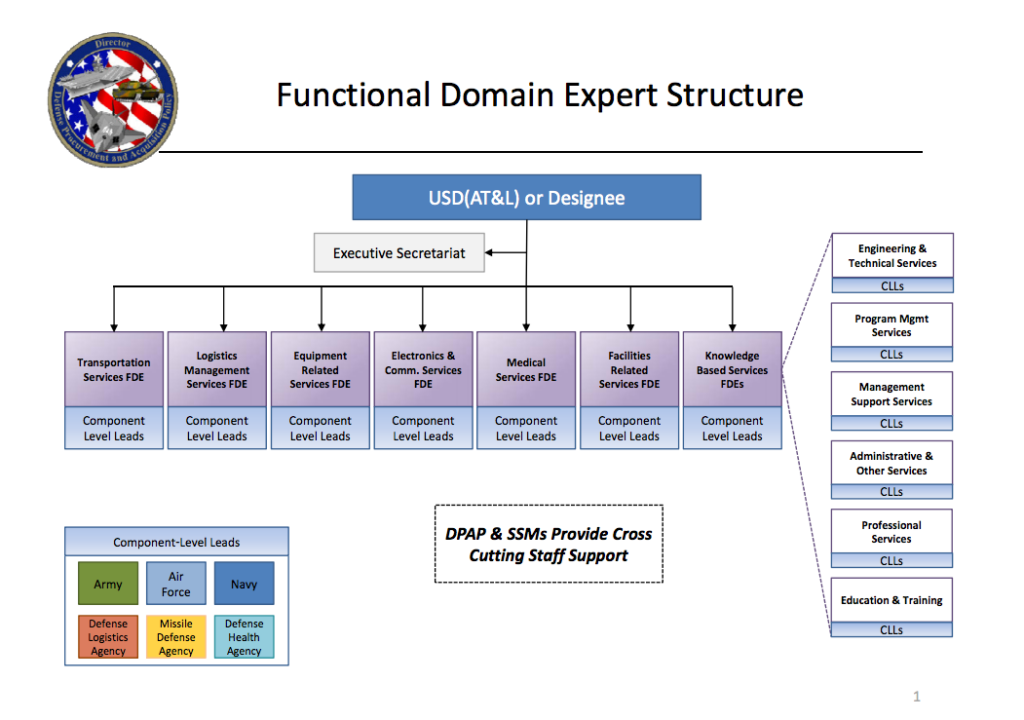WASHINGTON: A plan to overhaul how the Pentagon buys services — a $155 billion annual business, bigger than weapons acquisitions — is now on the desk of the Defense Department’s top buyer.
“It went to Frank Kendall this week,” Kenneth Brennan, deputy director of services acquisition for undersecretary Kendall, said. “He is the final signature” required to put into effect a Department of Defense Instruction (DODI) tentatively titled 5000.AC, Brennan told me this morning. As laid out in Kendall’s Better Buying Power 3.0 plan, his self-imposed deadline to roll out the service reform is the end of this month.
“We’ve been working on this for over a year,” Kendall’s principal deputy, Alan Estevez, said at a Professional Services Council conference yesterday. The council represents many of the companies who sell services to the military and the intelligence agencies.
The stakes are high and Congress will be watching. “We spend more on services than we spend buying what people think of as direct combat capability,” $145 billion compared to $155 billion in 2014, Estevez said. The problem, he went on, is that “I’m spending that $155 billion dollars without the same level of oversight and scrutiny that is performed when I am buying things.”
Wait a minute. Hasn’t layer upon layer of well-intended “oversight and scrutiny” slowed down many a weapons program to a costly crawl? Why would anyone want to replicate a dysfunctional system and impose it on services?
We won’t, Brennan assured me. “It’s an entirely different set of structures,” he said. “The 5000 for services is going to be complimentary to, but is not the same structure [as] an MDAP (Major Defense Acquisition Program).”
“We’re really trying to keep this decentralized,” he said. In fact, “this is already decentralized. It’s chaos down there. How can I start introducing an element that brings some order to the process, without destroying the capabilities under the weight of its own infrastructure and bureaucracy?”
Modeled in large part on a process the Air Force has used since 2003, the new service acquisition system would keep authority to acquire services at relatively low levels, depending on the total value of the contract:
- $1 billion or more would require approval from Kendall, as DoD’s chief acquisition executive, or from his equivalents in the Army, Air Force, and Navy departments.
- $250 million to just under $1 billion would require approval from an unspecified “senior official.” Said Brennan, “we specifically stay away from making any specific definition to allow the military departments and the buying commands to make those individual decisions.”
- Under $250 million would require approval from a “senior services manager,” a position created by Congress in 2010, although lower value contracts could and probably would be delegated down further.
That structure is roughly similar to the one for weapons procurements, but compared to them, there are vastly more service contracts and most of them are much smaller.
“We deal in millions of contract actions, not just dozens of programs,” Brennan said, and their average value is $350,000 — not millions.
So instead of micromanaging every contract, which would be impossible even for the Pentagon, the new scheme actually seeks to empower working-level officials. Traditional oversight takes a “guilty until proven innocent” approach: Every decision must be scrupulously documented, reviewed, and approved to ensure no one’s doing something wrong. The new service acquisition policy reverses that. It’s “innocent until proven guilty”: Officials at the lowest level will have wide authority to contract for services, much as they do now, and they’ll only come under greater scrutiny if they screw up.
“You’re good to go” until something goes wrong, Brennan told me. “Then we’re going to have some hard talks and processes that you’re probably not going to enjoy.”
Acquisition experts will conduct “health assessments” of contracting practices, he said, a practice started by the Air Force to balance delegation with control. The criteria won’t be adherence to formula, he said, but to simple common-sense questions, such as, “Did they ask for what they wanted, did they get what they asked for, and did they get a reasonable price?”
The “did they ask for what they wanted” part is harder than it seems: There’s a whole Pentagon subculture devoted to writing requirements for weapons programs and those requirements are frequently unclear or unexecutably ambitious. Brennan assured me there’s no intention of recreating this requirements bureaucracy on the services side. Instead, there’ll be a system of “services requirements review boards,” a process pioneered by the Navy Department, where Brennan worked before coming to Kendall’s shop.
To help civil servants better use their discretion, the new policy would create centers of expertise to advise them on best practices. Some of these build on existing Defense Department “communities,” such as engineers, while others such as administrative services are being created from scratch. Twelve officials have been named as “Functional Domain Experts” to lead this effort in areas from facilities to program management.

In addition, there’ll be a “Commercial Pricing Center of Excellence” housed in the Defense Contract Management Agency, working on both goods and services.
“The commercial center of excellence is an advisory function,” Shay Assad, the director of defense pricing, emphasized at the PSC conference yesterday. “It is not ‘you will submit your procurement to me and I will review it.'” In fact, going to the center is completely optional if a command or agency has adequate expertise of its own, Assad said.
Rather than micromanage, Assad said, “the purpose[is] to enable contracting officers to quickly determine — quickly determine — that the service that they’re buying or the product they’re buying is in fact commercial. The standard that we are going to drive to 72 hours to make that decision.”
With that decision in hand, contracting officers can go ahead and buy — and they can refer anyone second-guessing their decision to the experts at the center of excellence, Assad said, rather than be “left standing in the wind.”
Getting bureaucrats comfortable with this new process will take time — easily five years or more, Brennan guesses. There’s a tremendous amount of culture change and training that must take place, in an area so ill-defined that the Pentagon’s not sure how many people work in it.
“In contrast with the major weapons systems,” Brennan said, “services can be bought by anyone with a dollar and a willing contracting officer.” So how many people are involved across the Department of Defense? “On the order of tens of thousands,” he told me, “and it may be even more.”
All those officials at least have a major motivation to get with the new program: Tighter budgets will force them to economize and prioritize. “There is a built-in incentive via sequestration,” Brennan told me. “Nothing clarifies focus like a lack of cash.”
Pass a preemptive CR, deal with inflation and watch the debt limit: 3 tasks for Congress
John Ferrari and Elaine McCusker of AEI argue in this op-ed that Congress needs to act quickly to ensure American national security before getting bogged down in election season.


























